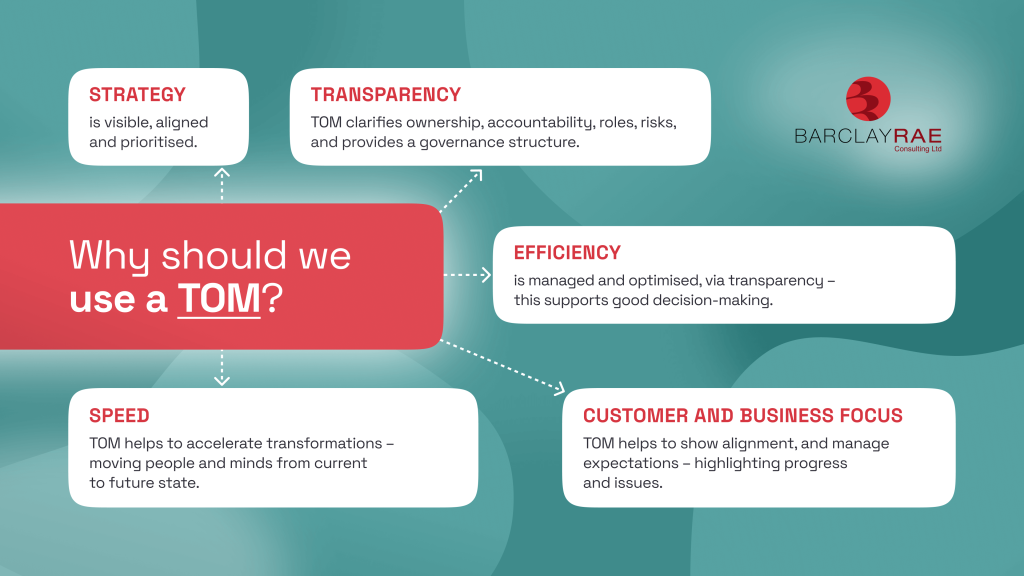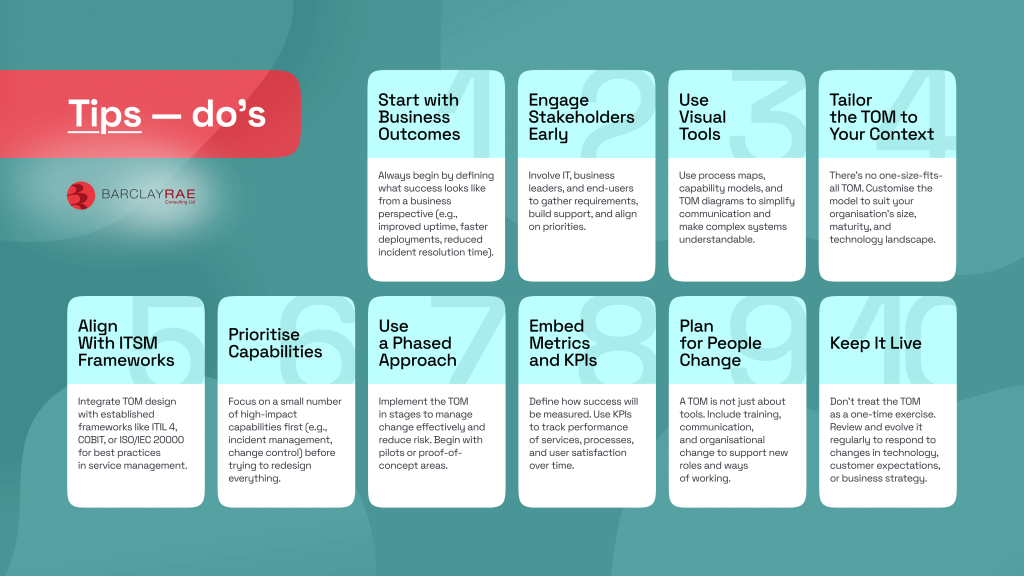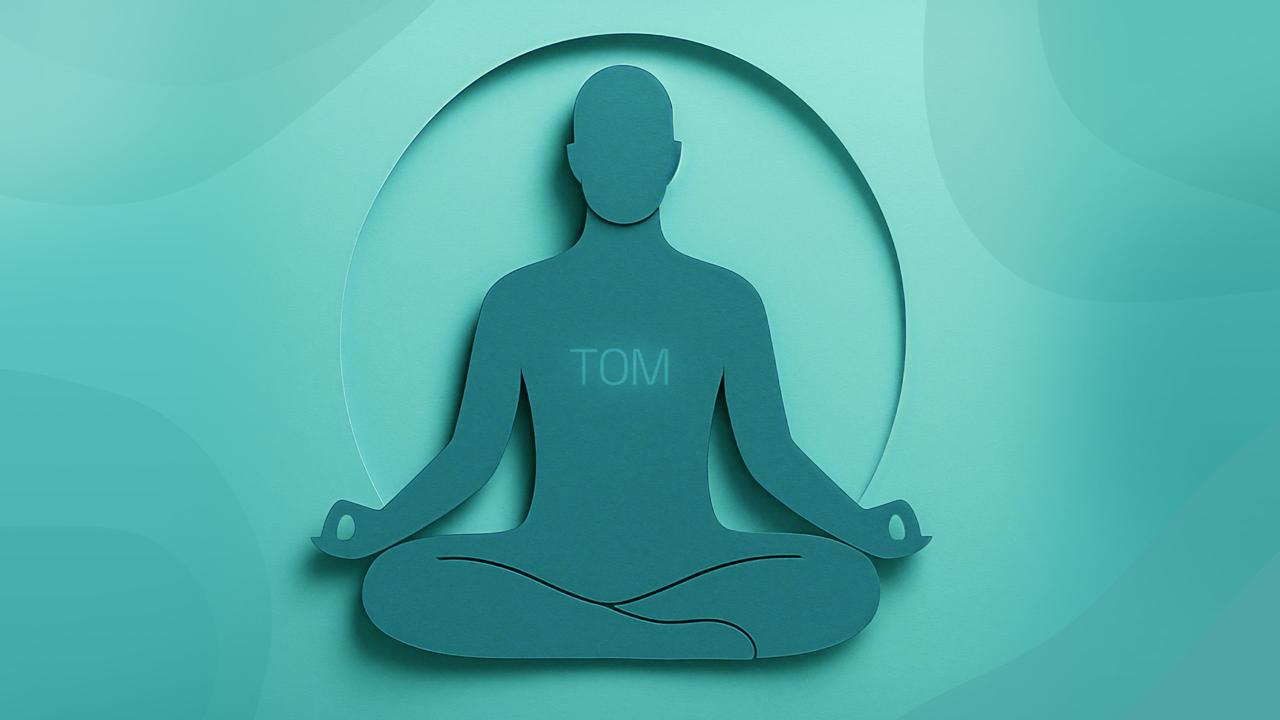Most people don’t get excited by operating models, but they do care about knowing what’s coming, how it’ll affect their job, and whether they’ll be supported through the change. That’s what a well-designed, human-centered TOM (Target Operating Model) can provide—not just process and structure, but a shared story and a clear destination that puts people at the center of transformation.
A human-centered TOM is a blueprint that defines how a business or IT function should operate in the future to deliver its strategy effectively. In ITSM, it outlines the desired future state of operations, including processes, technologies, organizational structure, people, governance, and metrics—all designed around the human experience of change.

TOMs act as a bridge between vision and execution, helping transformation teams move from the “as-is” to the “to-be” with a clear roadmap. Crucially, they also support communication — a TOM provides a shared picture of what the future looks like and what changes are required.
This becomes especially important in service operations. Whether you’re redesigning a service desk, shifting to digital channels, or restructuring teams, the TOM can model your target state and highlight opportunities, gaps, and priorities.

A well-defined TOM visualises the journey, with the start and end points – that’s a clear story that can then be told and absorbed across your organisation. When you travel, it’s so much easier to know where you start and expect to end up, with clarity about how you will get there. Maps and guides are great tools to help you move along the route – you need information at several levels – the big picture, the next thing you need to do, plus what you need to help you move to the next step – e.g. where you get the key from in your Airbnb apartment, how you will find the correct train platform.
At this same time, you have an overview somewhere that says we’re halfway through our two-week journey, etc. If you’re on a long-haul flight, it’s helpful to see the full flight profile and your current position.
So, TOM is not simply about the technical details that might define your organisation’s structure or tech platform. Certainly, TOM helps to bring these into tangible relief. However, TOM is really useful to help you on the journey, as a regular view of the high-level destination, which can also then be called on to help move to the next stage.
Making it Human-centered
TOM is a key element in organisational change management – visualisation helps create a shared view, enabling everyone to have a clear idea of the future and what they need to do to get there.
It’s all about people. Helping them to see the destination and what they need to do to get there.
If your new structure is going to change its channel and contact model from voice and email to walk-in/pop-up and digital contact, then the TOM will provide a picture that you can use to model and try out various options. For example, you may want to increase digital contact for certain types of requests or issues and focus on high-value/ high-risk channels that involve direct human interaction. Sometimes offering differentiated response and resolution targets for different channels helps to do this – the TOM can show this in full context. Modelling is a key output from TOM development, allowing you to explore other options and levels of service.
So, use TOM as a tool to manage change and help people come on the transformation journey with you. Visualisation is much more likely to capture interest and be ‘sticky’ in people’s brains – certainly this will stick more than a 200-page project initiation document.
Visuals and storytelling will help you make the project feel real, while also giving all the people involved a clear picture of what is happening. The TOM can exist at many levels, from high-level to very detailed, but what it provides is the storytelling and mapping that your people can buy into, or even disagree with. Whatever it is, once you have a clear visualisation of your plan and destination, you’ve got a better chance of getting there without too much trouble if you use a TOM.

Getting started with TOM – key steps
There is plenty of advice related to getting started with a Target Operating Model, tips for success, and pitfalls to avoid in this blog: Mastering Service Management with a Target Operating Model. At a high-level you should:
- Map the As-Is state (current operations) and the To-Be state (target model).
- Identify gaps and opportunities between current and future states.
- Develop a transition plan with clear milestones and quick wins.
- Assign owners for each area of change to drive accountability.
Then What?
- Develop related documentation – visualisations.
- Build a narrative on how all the pieces fit together
- Socialise and tweak the content and message
- Keep doing this.
Need help getting started? Get in touch to discuss how we can help you with your human-centered TOM.




